 March 10, 2016 John E. Ross, KD8IDJ, Editor
| ||||||||||||
ARRL Executive Committee to Meet in Texas The ARRL Executive Committee (EC) will hold its first meeting of the year on Saturday, March 12, in Dallas, Texas. The session will mark some other significant milestones. ARRL's new President, Rick Roderick, K5UR, will chair his first Executive Committee meeting since taking office in January, and incoming ARRL Chief Executive Officer The EC is expected to hear a report from ARRL Chief Counsel Chris Imlay, W3KD, on a variety of regulatory, legal, and legislative matters, including the anticipated authorization by the FCC of new bands at 135.7 kHz and 472 kHz. Also up for discussion is the status of ARRL's Petition for Rule Making (RM-11759) that calls on the FCC to repair what it has called a "shortfall in available RTTY/data spectrum" in the 80 and 75 meter bands.
Still outstanding is the League's November 2013 Petition (RM-11708) to delete restrictions on symbol rates for data communication and to establish a 2.8 kHz maximum occupied bandwidth for data transmissions below 29.7 MHz. Various Amateur Radio antenna and radio frequency interference cases are other possible discussion topics. The panel is also expected to discuss the progress of the Amateur Radio Parity Act legislation now before both houses of Congress. The EC will continue its review of standing orders. In addition, it will approve ARRL conventions and club affiliation applications and recognize new ARRL Life Members. The Executive Committee is chosen by the ARRL Board of Directors to make decisions on League matters between Board meetings, in accordance with existing Board of Directors' policy. Read more. ARES Groups, Individual Hams Support Army and Air Force MARS Exercise On February 12, more than 300 Amateur Radio Emergency Service (ARES) members and individual radio amateurs participated in the first quarterly Military Auxiliary Radio System (MARS) US Department of Defense (DOD) communications exercise of 2016 (COMEX 16-1). US Army and Air Force MARS operators across the US, Europe, and the Pacific took part in the 12-hour HF exercise, which simulated a widespread loss of telephone and Internet communication across the US. MARS operators reached out to ARES members and individual hams in as many US counties as possible to obtain status reports via radio.
English said the DOD "was very pleased with the outcome of the exercise, and especially with the number of Amateur Radio stations that participated on a weekday and the number of unique county reports received over the 12-hour period." After eliminating duplicates, English said, MARS received 312 county status reports. The exercise aimed to focus on individual MARS operator skills, refine joint operational procedures between Army and Air Force volunteer leaders, and to continue to develop local-level working relationships between MARS operators and ARES groups and individual radio amateurs and clubs, English said. NCVEC Announces Third Public Release of 2016-2020 Amateur Extra Question Pool The National Conference of Volunteer Examiner Coordinators (NCVEC) has released the third revision of the Amateur Extra class (Element 4) question pool that goes into effect on July 1. This revision supplants the Element 4 question pools released on January 8 and February 5, and includes corrections, modifications, and various editorial changes. The Element 4 question pool diagrams are in a separate document.
The QPC notes that FCC Part 97 rule citations are not a part of the exam question itself, but are included for reference purposes, and that errors in or changes to Part 97 are not considered adequate reason to remove a question from the pool. The QPC invites comments and questions. -- Thanks to the NCVEC Question Pool Committee Air Force Pledges Continued Cooperation with Radio Amateurs During Cape Cod Radar Upgrades As updating of the Pave PAWS radar installation gets under way at the Cape Cod Air Force Station in Massachusetts, the US Air Force has reached out to the Amateur Radio community to continue the positive working relationship developed between the two parties since March 2007. Pave PAWS radar installations on both coasts have required the modification of some 70 centimeter Amateur Radio systems to mitigate interference to the military radars. The Amateur Service is secondary on 70 centimeters. ARRL Regulatory Information Manager Dan Henderson, N1ND, said work now has begun to install the updated early-warning radar standards at Cape Cod.
"This is the new version of Pave PAWS and it will bring the Cape Cod radar up to the same higher standard already employed at the Beale Air Force Base Pave PAWS facility in California, as well as at others in the Space Early Warning system," Henderson said. "The radar will be a little more sensitive, so some additional mitigation is possible, but nothing like that required when the project started in 2007. This is the last Pave PAWS site to be upgraded." Henderson, who has served as the League's point person on this project, and ARRL New England Division Director Tom Frenaye, K1KI, were briefed in late 2015 on the changes by officials at the Cape Cod facility. "The fact that the Air Force reached out to inform us of the pending changes speaks volumes about the excellent working relationship we have managed to build with them over the past 9 years," said Henderson. "The Amateur Radio communities in proximity to both the Cape Cod and Beale sites have stepped up to the plate and demonstrated their willingness to be good-faith partners with the Air Force, accepting their responsibility as secondary users of this part of the spectrum, and, in almost all cases, taking the necessary steps to achieve the required mitigation standards while still maintaining Amateur Radio access to this spectrum."
In a statement, Cape Cod AFS Sixth Space Warning Squadron Crew Commander and Public Affairs Officer Lt Drew S. Dutcher said his facility recognizes and appreciates Amateur Radio's service to the community and its continued cooperation. "In the coming months we will be undergoing upgrades to our facility which will help us improve our capabilities to locate and track satellites for entities such as NASA and SpaceX," Dutcher said. "The improvements will also ensure utilization of cutting-edge technology to protect our eastern sea border from incoming Intercontinental Ballistic Missiles and Sea Launched Ballistic Missiles. As always, we ask that you be mindful and courteous of our frequency range. We do not anticipate any interference or spurious emissions to any [Amateur Radio] frequencies." Henderson asked amateurs with questions about the project to contact him. Read more. National Parks on the Air Update ARRL's National Parks on the Air (NPOTA) event will take center stage at Dayton Hamvention® May 20-22. NPOTA co-managers Sean Kutzko, The weather must be getting warmer, as the number of weekly scheduled activations is going up. No fewer than 46 are on tap for March 10-16, including the Selma to Montgomery National Historic Trail in Alabama, and the first-ever activation of Chamizal National Memorial in Texas, which has extremely limited access for hams. Details about these and other upcoming activations can be found on the NPOTA Activations calendar. Keep up with the latest NPOTA news on Facebook. Follow NPOTA onTwitter (@ARRL_NPOTA). Elementary Schoolers' CubeSat Ready to Deploy from ISS The 400 youngsters attending a suburban Washington, DC, parochial school are eagerly awaiting the day the CubeSat they constructed will be deployed from the International Space Station. The little STMSat-1 spacecraft -- an educational project of pupils attending St Thomas More (STM) Cathedral School in Arlington, Virginia -- is equipped with a slow-scan TV (SSTV) payload that will transmit on 70 centimeters (437.800 MHz). The school won a NASA competition for the launch. The satellite is the first to be designed and built by grade-schoolers, who have been supported by NASA technical advisors. Transported to the ISS in December by an Orbital ATK Cygnus spacecraft, the kit-built 1U satellite had been scheduled for release in mid-February, but deployment was postponed.
"The STM Sat-1 mission is to perform Earth observation and engage grade-school students around the world as remote Mission Operation Centers," the STMSat-1 website explains. The satellite project is part of the school's STEM (science, technology, engineering, and mathematics) education initiatives. St Thomas More includes students from pre-kindergarten through grade 8. School Principal Eleanor McCormack is the project manager. NASA's Technology Demonstration Office is the space agency's sponsoring organization. The school has been working with Joseph Pellegrino at Goddard Space Flight Center in Maryland, and with the Arlington Amateur Radio Club. NASA provided the school with a mobile "cleanroom" to ensure that the construction phase met with strict guidelines and standards for launch and deployment from the ISS. NASA also provided the school with an antenna, so the school can receive the SSTV images and temperature readings the satellite sends back. The students already have tested their CubeSat by sending it aloft on a tethered balloon. The school has been working with the Arlington Amateur Radio Club.
The SSTV camera on board STMSat-1 will transmit a Martin-2 image every 30 seconds, but no beacon. The youngsters are hoping it will send back images of Earth as seen from space. The transmitter runs 3 W, and there is no onboard data storage capability. The little satellite also carries a medal blessed by Pope Francis, a capsule filled with personal items from St Thomas More's annual auction winners, and a metal plate etched with the signatures of all STM students, faculty, and staff. The project aims to engage other schools around the world as "Remote Mission Operation Centers" (RMOCs). STMSat-1 has an estimated lifetime of at least 9 months. Read more. Fox-1E (RadFxSat-2) Selected for Participation in NASA's CubeSat Launch Initiative RadFxSat-2, the Space Radiation Effects CubeSat -- also known as Fox-1E -- has been selected to participate in NASA's CubeSat Launch Initiative (CSLI). RadFxSat-2 (Fox-1E) is a partnership opportunity between Vanderbilt University's Institute for Space and Defense Electronics (ISDE) and AMSAT. The Fox-1E spacecraft bus will be built as part of the Fox-1 series but will feature a linear V/U (Mode J) transponder "upgrade" instead of the standard FM repeater that Fox-1A through D have carried.
RadFxSat-2 (Fox-1E) will carry a radiation effects experiment similar to the one aboard RadFxSat (Fox-1B), which is set to launch in January. The downlink will feature a 1200 bps BPSK telemetry channel to carry the Vanderbilt science data, in addition to a 30 kHz-wide transponder for Amateur Radio use. Additional mission and timeline details are forthcoming. -- Thanks to AMSAT News Service Amateur Radio Accompanying "Great Northern Way" Arctic Russia Expedition Amateur Radio is traveling with the "Great Northern Way" Arctic expedition in Russia. Listen for R3CA/8/9/0 along the route. The historical-geographical expedition commemorates the 400th anniversary of the Northern Sea Route and will be part of a research program, "Mysteries of the Russian Arctic."
Two all-terrain vehicles will carry participants along a 10,000 kilometer (approximately 6200 miles) route on frozen Siberian rivers, the open spaces of the Arctic tundra, and the land-fast and drifting ice of Russia's Arctic seas. The expedition plans to make stops of about 1 day each on some Arctic islands, which would be of interest to Islands on the Air (IOTA) enthusiasts. Heading the expedition is the president of the Russian Geographical Society's Arktika Center and polar explorer Vladimir Chukov, R3CA. Call sign designators will indicate the location -- R3CA/8 (Yamal), R3CA/9 (Taimyr), and R3CA/0 (Yakutia, Chukotka). Operation has been on SSB in the vicinity of 14.120 and 14.130 MHz.
The radio operator is Valery Nesterov, RA9J. In Tiksi, Yuri Zaruba, UA9OBA, the president of the Russian Robinson Club, plans to join the expedition, which is carrying an Icom IC-7000 transceiver. An Icom AH2B mobile antenna will be used while under way, but when the expedition is parked, inverted Vs will be deployed. The expedition plans to visit sites associated with research and development of the Russian Arctic, historical monuments, and places of interest related to natural history and cultural heritage. Expedition members will conduct environmental monitoring along the Arctic coast. A series of documentaries about the history and current state of the Russian Arctic and its people is planned. Read more. -- Thanks to The Daily DX, Great Northern Way expedition website Heil Sound Celebrating 50th Anniversary Heil Sound, a name that's probably synonymous within the Amateur Radio community for its microphones and "boom set" microphone/headset combinations, is marking its 50th anniversary this year. Heil Sound came into being in 1966 as Ye Olde Music Shoppe -- Bob Heil initially made a name for himself working with music performers to provide sound reinforcement for their live gigs, initially supplying full sound system packages for venues and festivals throughout the Midwest and later working with world-class acts, such as Humble Pie, The Who, The Grateful Dead, and Joe Walsh, WB6ACU. Heil said it was the Dead's Jerry Garcia who suggested changing the name of his enterprise to Heil Sound. Among other innovations, Heil created the quadraphonic sound system for The Who's "Quadrophenia" tour as well as the Heil Talk Box made famous by Joe Walsh and Peter Frampton.
By 1982, Heil Sound had curtailed the touring side of the business and began concentrating on developing products for the Amateur Radio market. Heil also launched a home theater division. Amateur Radio and professional audio came together in 2006, when Walsh suggested that Heil Sound develop microphones for concert use. Heil Sound designed and manufactured high-quality microphones, and has gained a reputation among music performers for its professional microphone products, such as the PR30 and PR40. Bob Heil and his wife and business partner Sarah -- who is the president of Heil Sound -- are frequent visitors at major Amateur Radio conventions and gatherings. Vessel with Rich Ham History -- the Bowdoin -- Being Refurbished for Further Exploring The schooner Bowdoin, which has a prominent place in early Amateur Radio history, will be relaunched this spring. The vessel relied on Amateur Radio operators for communication during explorer Donald B. MacMillan's Arctic Expedition of 1923, and on the MacMillan-McDonald-Byrd Expedition of 1925. Now it's undergoing extensive renovation and refitting in Maine. Named after MacMillan's alma mater, Bowdoin College, the Bowdoin today is the official vessel of the State of Maine and the flagship of Maine Maritime Academy's Vessel Operations and Technology Program, which readied the vessel for refitting last year.
According to an article in the February 25 edition of The Ellsworth American newspaper, work is under way at a Camden, Maine, shipyard on the deck and hull of the 95-year-old schooner, built in East Boothbay, Maine, in 1921. The vessel's diesel engine -- a later amenity -- is being rebuilt by Maine Maritime Academy students. The Bowdoin is set to relaunch around June 1. In 1923, MacMillan had turned to the ARRL for help in outfitting his expedition with better wireless gear, and, as Michael Marinaro, WN1M, explained in his June 2014 QST article, "Polar Exploration," that help "was enthusiastically provided. Hiram Percy Maxim and the Board agreed to furnish support as well as recruit an expert operator to accompany the expedition. Donald H. Mix, 1TS, of Bristol, Connecticut was chosen for the task."
League Board member M.B. West custom-designed the equipment, which was built by radio amateurs at his firm, Zenith Electronics. The transmitter operated on medium-wave frequencies with a power of 100 W and used the call sign WNP -- for "Wireless North Pole." As Marinaro explained in his article, with Mix as the ship's radio operator, "WNP transmitted weekly 500-word press releases and listings of stations worked and heard. Once received by amateur stations, these reports were delivered to local affiliated newspapers of the North American Newspaper Alliance; from there, they were distributed syndicate-wide by telegraph." In 1925, the Bowdoin headed to Greenland. "The outstanding accomplishment of the expedition was in the sphere of radio," Marinaro wrote. "Utilizing short waves, the expedition was in consistent contact with the outside world throughout the journey, to the delight of the amateurs who were able to work them. The phenomenal success proved to the Navy that short waves were definitely superior to the long and ultra long waves on which the fleets had been relying." Read more. World-Famous Moonbounce Enthusiast Doug McArthur VK3UM, SK Renowned Earth-Moon-Earth (EME, moonbounce) enthusiast Doug McArthur, VK3UM, of Glenburn, Victoria, Australia, died on February 21, following a stroke. He was 74. Within the EME community, McArthur -- a radio amateur for nearly 60 years -- enjoyed a worldwide reputation for his expertise, exploits, and accomplishments.
He was well known for his 8.6 meter dish, which he used on 1296 MHz in 2006 to set a moonbounce DX record by working CT3/DL1YMK in Portugal, a distance of 18,342.3 kilometers (11,372.2 miles). His early interest in Amateur Radio guided his choice of career in radio communication and broadcasting. VK3UM became a stalwart of the VHF bands, pursuing contacts via various scatter modes, aircraft reflection, and -- inevitably -- moonbounce on 2 meters and 70 centimeters. It was after he retired to rural Glenburn, northeast of Melbourne, that he purchased his 8.6 meter Kennedy dish, although a stroke in late 1999 interrupted work on that project. Eventually he rigged the dish with a dual feed, to work on 70 and 23 centimeters. Along the way, he developed some key software applications now used by moonbounce operators around the world, including his EME Calc package, for assessing and simulating every aspect of an EME station's operation. His EMR Calc software, for assessing any amateur station's compliance with electromagnetic radiation safety standards, is known and used around the globe. Read more. -- Thanks to the Wireless Institute of Australia In Brief...
. . . . . . The K7RA Solar Update Tad Cook, K7RA, Seattle, reports: Average daily sunspot numbers and solar flux both increased over the past week. The average daily solar flux went from 92.9 to 96.8, and the average daily sunspot number jumped from 41.4 to 64.4. Geomagnetic indicators increased as well, with activity peaking on March 6 and 7.
The predicted planetary A index is 5, 10, 8, 10, and 8 on March 10-14; 5 on March 15-16; 25 on March 17-19; 12 on March 20; 5 on March 21 through April 2, and 22 on April 3. Sunspot numbers for March 3 through 9 were 50, 95, 68, 68, 61, 48, and 61, with a mean of 64.4. The 10.7 centimeter flux was 98.7, 100.5, 96.2, 95.5, 94.1, 95.5, and 97.4, with a mean of 96.8. Estimated planetary A indices were 8, 4, 4, 35, 24, 8, and 7, with a mean of 12.9. Estimated mid-latitude A indices were 7, 2, 3, 19, 17, 6, and 6, with a mean of 8.6. This week's bulletin will include an updated forecast and reports on 10 meter conditions from N0JK and WB5AGZ. Send me your reports and observations. Just Ahead in Radiosport
See the ARRL Contest Calendar for more information. For in-depth reporting on Amateur Radio contesting, subscribe to The ARRL Contest Update via your ARRL member profile e-mail preferences. Upcoming ARRL Section, State, and Division Conventions and Events
Find conventions and hamfests in your area.
. . .
Subscribe to...
Free of charge to ARRL members...
| ||||||||||||
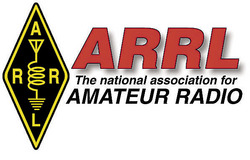 Tom Gallagher, NY2RF, will be attending his very first EC meeting, as he prepares to assume his full CEO duties on April 18. And this week's EC gathering will mark the last that current CEO David Sumner, K1ZZ, will attend in that capacity. Elected by the ARRL Board of Directors in January, Gallagher, now designated as CEO-Elect, arrived at ARRL Headquarters on February 29 to begin the transition process. Sumner has directed the Headquarters staff since March 1982 -- initially as General Manager -- and has been a member of the Headquarters staff for some 44 years.
Tom Gallagher, NY2RF, will be attending his very first EC meeting, as he prepares to assume his full CEO duties on April 18. And this week's EC gathering will mark the last that current CEO David Sumner, K1ZZ, will attend in that capacity. Elected by the ARRL Board of Directors in January, Gallagher, now designated as CEO-Elect, arrived at ARRL Headquarters on February 29 to begin the transition process. Sumner has directed the Headquarters staff since March 1982 -- initially as General Manager -- and has been a member of the Headquarters staff for some 44 years.
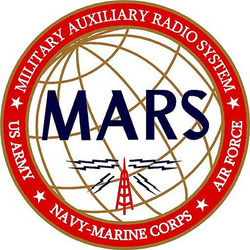 "The purpose of the exercise was to give MARS operators the opportunity to demonstrate their proficiency in responding to DOD requests for simulated emergency situational awareness reports from counties across the United States," Army MARS Program Manager Paul English, WD8DBY, explained. "DOD and the MARS leadership want to thank the more than 300 Amateur Radio operators who assisted in making this exercise a success by providing local county information using VHF, UHF, and NVIS HF voice communications."
"The purpose of the exercise was to give MARS operators the opportunity to demonstrate their proficiency in responding to DOD requests for simulated emergency situational awareness reports from counties across the United States," Army MARS Program Manager Paul English, WD8DBY, explained. "DOD and the MARS leadership want to thank the more than 300 Amateur Radio operators who assisted in making this exercise a success by providing local county information using VHF, UHF, and NVIS HF voice communications." "We would like to remind the public that users of question pool documents are free to correct minor typographical or punctuation errors, including obvious minor omissions of same," the NCVEC Question Pool Committee said in releasing this revision. "Such corrections must not cause a change in the meaning of a question or any of the proposed answers to the questions."
"We would like to remind the public that users of question pool documents are free to correct minor typographical or punctuation errors, including obvious minor omissions of same," the NCVEC Question Pool Committee said in releasing this revision. "Such corrections must not cause a change in the meaning of a question or any of the proposed answers to the questions."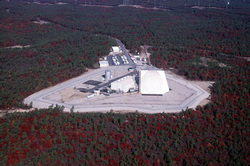

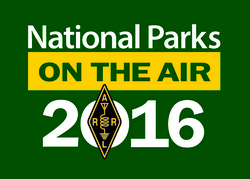 KX9X, and Norm Fusaro, W3IZ, will be on hand to answer your NPOTA questions, host a forum on the event, and help guide you through your activation plans. As part of the NPOTA presence at Dayton, ARRL is looking for high-quality videos or photographs of your NPOTA activities. Video should be no more than 3 minutes in length and highlight both ham radio and the NPS unit itself. You should also have the rights to any background music included in a submitted video. Help us tell the NPOTA story by sharing yours. E-mail
KX9X, and Norm Fusaro, W3IZ, will be on hand to answer your NPOTA questions, host a forum on the event, and help guide you through your activation plans. As part of the NPOTA presence at Dayton, ARRL is looking for high-quality videos or photographs of your NPOTA activities. Video should be no more than 3 minutes in length and highlight both ham radio and the NPS unit itself. You should also have the rights to any background music included in a submitted video. Help us tell the NPOTA story by sharing yours. E-mail 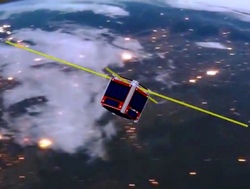
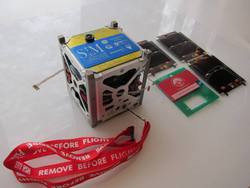
.jpg) Vanderbilt University, with cooperation from AMSAT, submitted the RadFxSat-2 CSLI proposal in November 2015. Out of 21 proposals, NASA has recommended 20 for participation in the CSLI opportunity. RadFxSat-2 is prioritized as number 1 out of the 20 selected and has been offered an opportunity for a launch date. AMSAT and Vanderbilt University are evaluating the opportunity to see if it meets their mission and orbital parameters.
Vanderbilt University, with cooperation from AMSAT, submitted the RadFxSat-2 CSLI proposal in November 2015. Out of 21 proposals, NASA has recommended 20 for participation in the CSLI opportunity. RadFxSat-2 is prioritized as number 1 out of the 20 selected and has been offered an opportunity for a launch date. AMSAT and Vanderbilt University are evaluating the opportunity to see if it meets their mission and orbital parameters.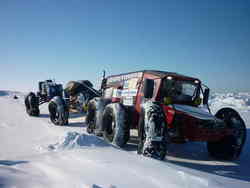

 a music store in Marissa, Illinois, the hometown of its founder, Bob Heil, K9EID. The celebration -- called "50 Years of Maximum Rock N' Roll" -- kicked off at the winter NAMM show. A commemorative series of
a music store in Marissa, Illinois, the hometown of its founder, Bob Heil, K9EID. The celebration -- called "50 Years of Maximum Rock N' Roll" -- kicked off at the winter NAMM show. A commemorative series of 
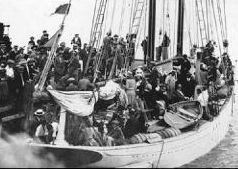
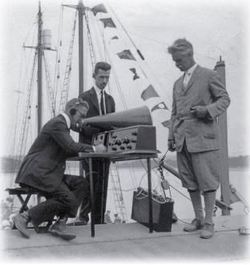
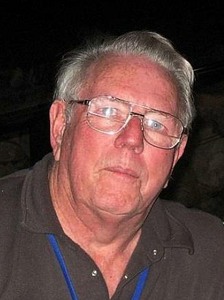
 Northern California DX Foundation Announces Scholarship Grant to Falklands Schools: The Northern California DX Foundation (
Northern California DX Foundation Announces Scholarship Grant to Falklands Schools: The Northern California DX Foundation ( MFJ Founder, President Martin Jue, K5FLU, Will Keynote Dayton DX Dinner "The Early Days of MFJ" will be the topic as MFJ Founder and President Martin Jue, K5FLU, keynotes the 31st annual Dayton DX Dinner, sponsored by the SouthWest Ohio DX Association (
MFJ Founder, President Martin Jue, K5FLU, Will Keynote Dayton DX Dinner "The Early Days of MFJ" will be the topic as MFJ Founder and President Martin Jue, K5FLU, keynotes the 31st annual Dayton DX Dinner, sponsored by the SouthWest Ohio DX Association (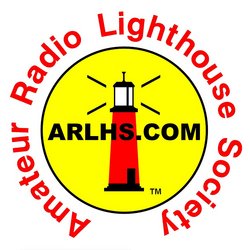 Amateur Radio Lighthouse Society Seeks New Leadership: The Amateur Radio Lighthouse Society (
Amateur Radio Lighthouse Society Seeks New Leadership: The Amateur Radio Lighthouse Society (
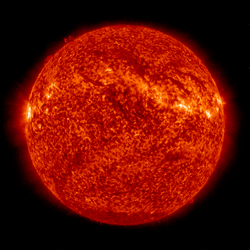 Predicted solar flux is 100 on March 10-12, 95 on March 13-16; 90 on March 17; 95 on March 18-20; 90 on March 21-23, and 95 on March 24-30. The solar flux will continue to meander between 90 and 95 for the foreseeable future.
Predicted solar flux is 100 on March 10-12, 95 on March 13-16; 90 on March 17; 95 on March 18-20; 90 on March 21-23, and 95 on March 24-30. The solar flux will continue to meander between 90 and 95 for the foreseeable future.







